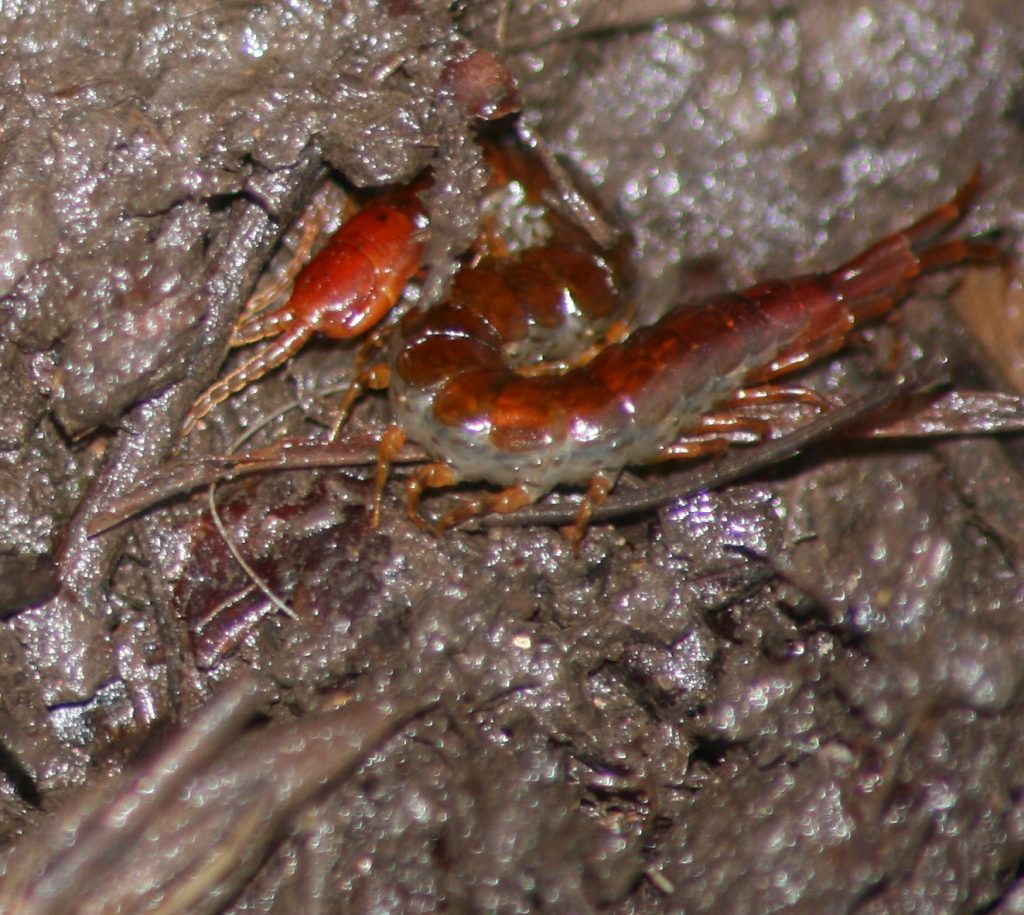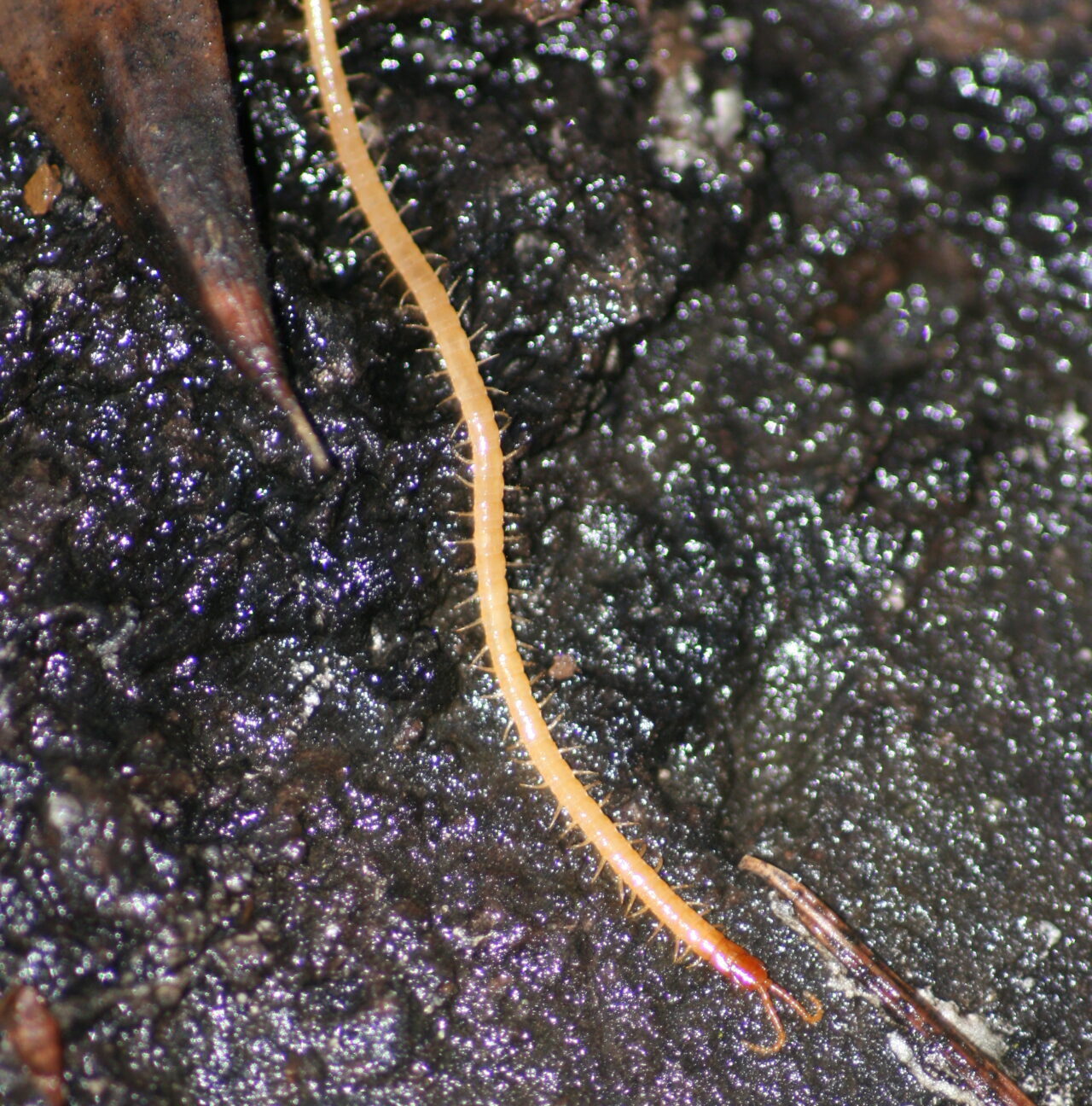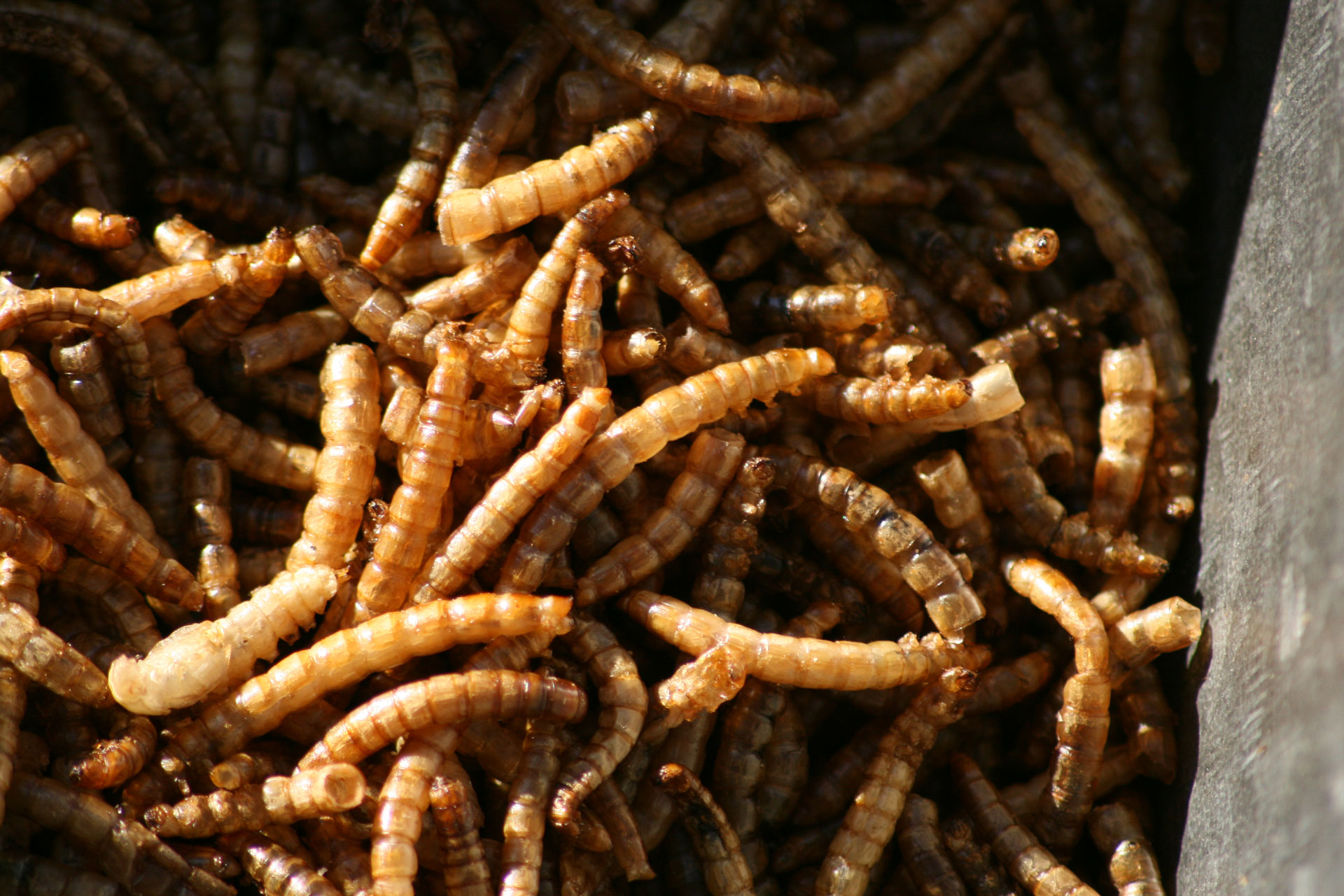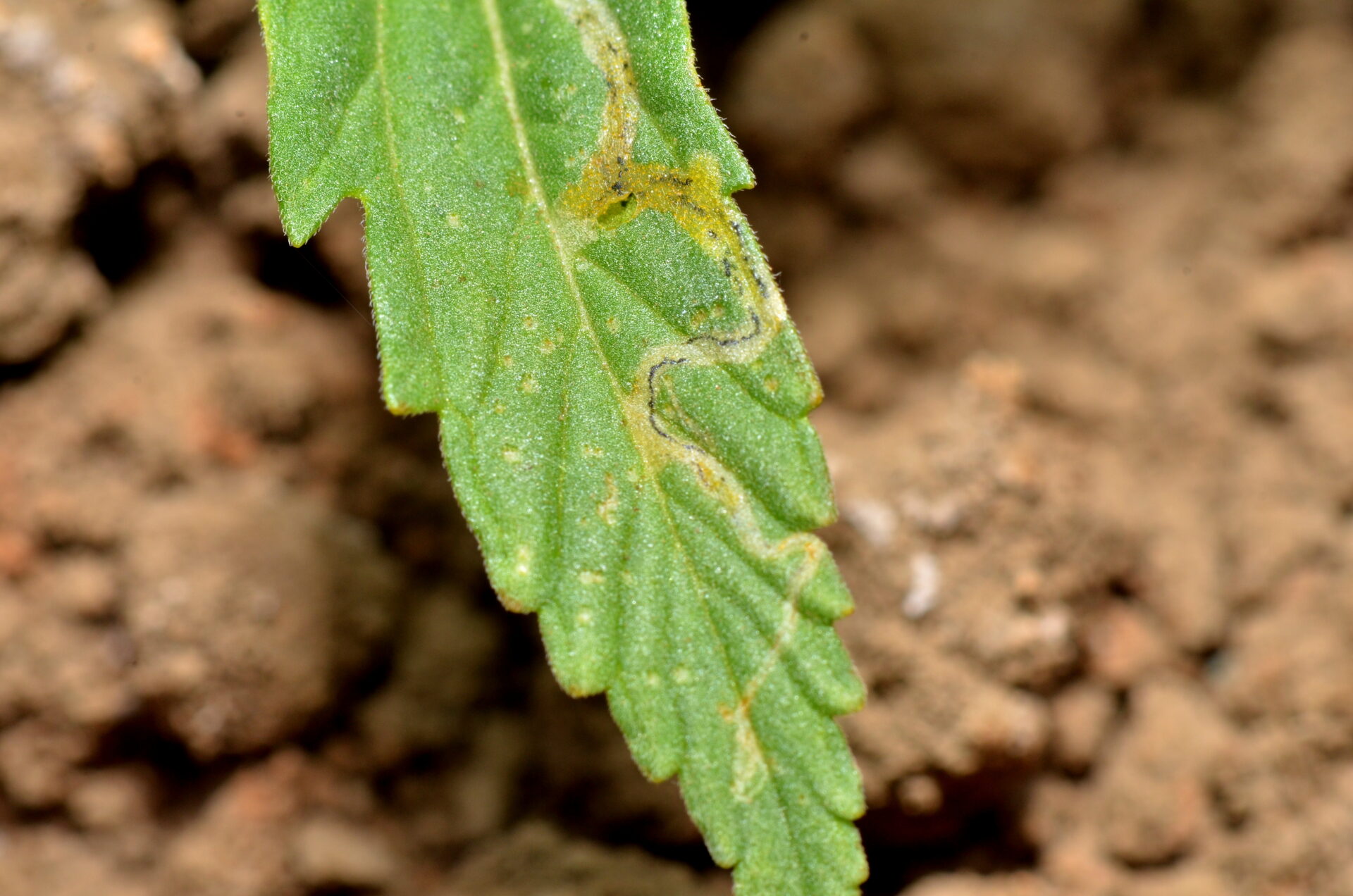Myriapods or myriapoda, such as centipedes and millipedes, are an important part of the soil food web. The word ‘myriapods’ is Greek and translates to myriad (or many) feet. These two types of creepy crawlers work in tandem, but in different ways, to benefit the soil. Centipedes are the hunters, and millipedes the gatherers.
The taxonomic hierarchy goes like this:
1) Animals
2) Invertebrates
3) Arthropods (which also includes insects, spiders, mites, lobsters and crabs)
4) Myriapods.
Besides their many legs, other characteristics of both centipedes and millipedes include: One pair of antennae; Two body segments – a head and trunk; Segmented trunks; Simple eyes, Mandible (lower jaw), maxillae (upper jaw); Respiratory exchange happens through a tracheal system — a series of branched tubes that infiltrate the body and carry oxygen directly to cells.

Centipedes
Centipedes are the top predator in the soil food web. They have modified legs that work like the mouthpieces of spiders, except the mouth claws on centipedes are tipped with venom.
Using these claws to hunt their prey make centipedes fierce predators. Most are fairly harmless to humans, although a bite from some types is painful, similar to a wasp sting.
Centipedes help keep some pests in check. They specialize in killing and eating snails and grubs, a definite pro for the farmer. On the con side, centipedes also eat earthworms and spiders. To keep things fair in the compost battleground, spiders, in turn, eat them. Centipedes are also a food source for large beetles, snakes, salamanders and opossums.
Some species of centipedes can reach 12 inches in length, although most are .5 to 4 inches. They have poor eyesight. Some soil centipedes are even blind. They move through the soil like an earthworm by expanding their length forward and then contracting to bring the hind part of their body towards the head. This tunneling improves aeriation of soil, allowing water and nutrients to reach the roots of plants.
Centipedes can be good mothers. Some species give live birth, others lay a clutch of 15 to 60 eggs. The maternal-type centipedes wrap their bodies around the eggs, licking them to protect them from fungi. They stay with the eggs, shielding them until they hatch.
Although centi means one hundred, centipedes never develop exactly 100 legs. They always have an odd number of body segments, and with one set of legs per segment, the math never adds up. Their legs can grow back if damaged. More body segments and legs are added with each molt.

Millipedes
Millipedes are the centipedes’ distant cousin. They consume organic materials and are considered shredders, or detritivores. They play an important role in breaking down plant and animal debris (detritus) and are excellent for the soil, eating up to 10 percent of the leaf litter in compost. Millipedes work in much the same way as earthworms, moving nutrients through the soil. Also like earthworms and soil centipedes, their tunneling aerates the soil and assists with water penetration. Millipedes also benefit other soil organisms, working together to turn mulch and debris into nutrient-rich soil. They recycle nutrients at a much higher rate than natural decomposition.
Millipedes are more docile than centipedes. They move slower, and instead of biting as a defense, they roll up into a tight ball to protect themselves. They also secrete a nitrogen gas that is toxic to small insects such as ants. Generally harmless to humans, a millipede’s gaseous secretions might cause skin or eye irritation to sensitive people. Like centipedes, millipedes have poor eyesight and get around by feel with their antennae. They have a special group of hairs on the second and third pair of legs that they use as brushes to keep their antennae clean.
Millipedes lay eggs. In some species, the mother − in others the father − protects the eggs. The hatchlings look like miniature adults, minus all the legs. Some species are legless at hatching. After the first molt, baby millipedes have three body segments and six sets of legs. It takes one to two years, sometimes longer, for a millipede to reach adulthood. Their average life span is 1 to 11 years. The African giant millipede can reach nearly a foot in size and is often kept as a pet. Most species are one to four inches long and dark brown to black in color.
Like centipedes, millipedes don’t live up to their name in number of legs. Milli means one thousand, but most millipedes have only 80 to 100 legs. No millipede species known to science has 1,000 legs. The one that comes the closest is Illacme plenipes, a rare millipede found only in Northern California.
A Specialized Millipede
For decades California’s Illacme plenipes was thought to be extinct. First discovered by government scientists in 1928, it wasn’t documented again until the mid-2000s when University of Arizona entomologist Paul Marek, then a doctorate student, found one. In the three-year period from 2005 to 2007, Marek and his team found 17 of the rare millipedes, as reported by National Geographic. All were clinging to the underside of sandstone boulders in a 2.8 square mile area outside of San Francisco.
The female of this little Silicon Valley creature sports up to 750 legs. Males have up to 550. Other unusual notes of interest about this highly adapted millipede are the claws on the ends of its legs – thought to assist in digging and traveling deep underground – and the long silken hairs on its back. The hairs likely help it cling to the underside of rocks and boulders. Even with its myriad of legs, this millipede is small – only 1.2 inches in length. For millipede aficionados, the rare and unusual Illacme plenipes is legend.
There are two less familiar myriapods – the sauropods and symphylans. They are both small, even microscopic organisms, that live in the soil and play their own roles in the soil food web.

Telling Centipedes and Millipedes Apart
Centipedes and millipedes sometimes look similar, but centipedes are flatter. They have round, flat heads and flattened bodies. They are the quicker of the two, undulating rapidly over rough terrain. Soil centipedes are often reddish orange in color but can range from translucent white to dark brown.
Millipedes are cylinder-shaped with a rounded head and body. They have two pairs of legs per segment. One would think with all those extra legs they would be the faster of the two, but they are much slower, with their legs moving in a wave motion on either side. They are most active at night or after a rainfall.

Where do They Live?
Myriapods are found around the world in grassland, farmland and forests and in every continent but Antarctica. They are even found in deserts, which strikes as odd because they generally dwell in damp, dark places – under logs and rocks, underground or inside mulch or compost piles. Without the waxy substance that coats the exoskeleton bodies of many insects, millipedes and centipedes are prone to dehydration, so they need a moist environment to thrive.
In agricultural soils, shredders such as millipedes can become pests if there isn’t enough dead plant material available. Without detritus available, they will eat live plant roots – adding another check in the compost pro column.
There are at least 12,500 different species of myriapods. Scientists estimate they have creeped along the earth, contributing to soil health, for some 485 million years.






